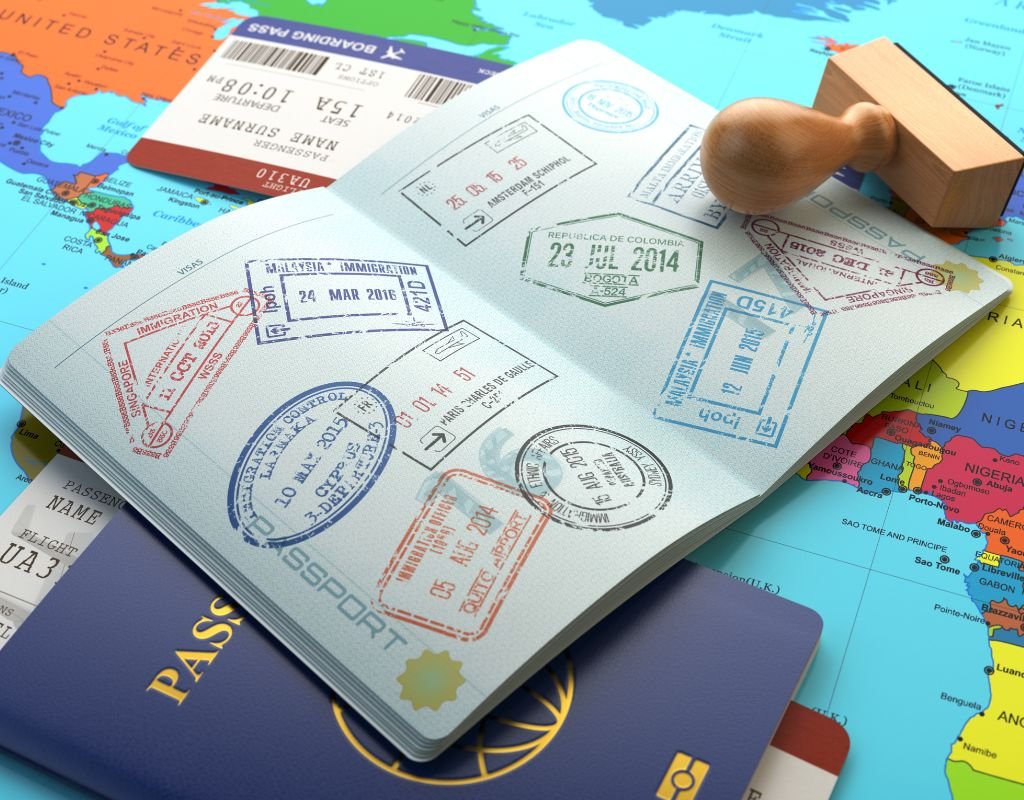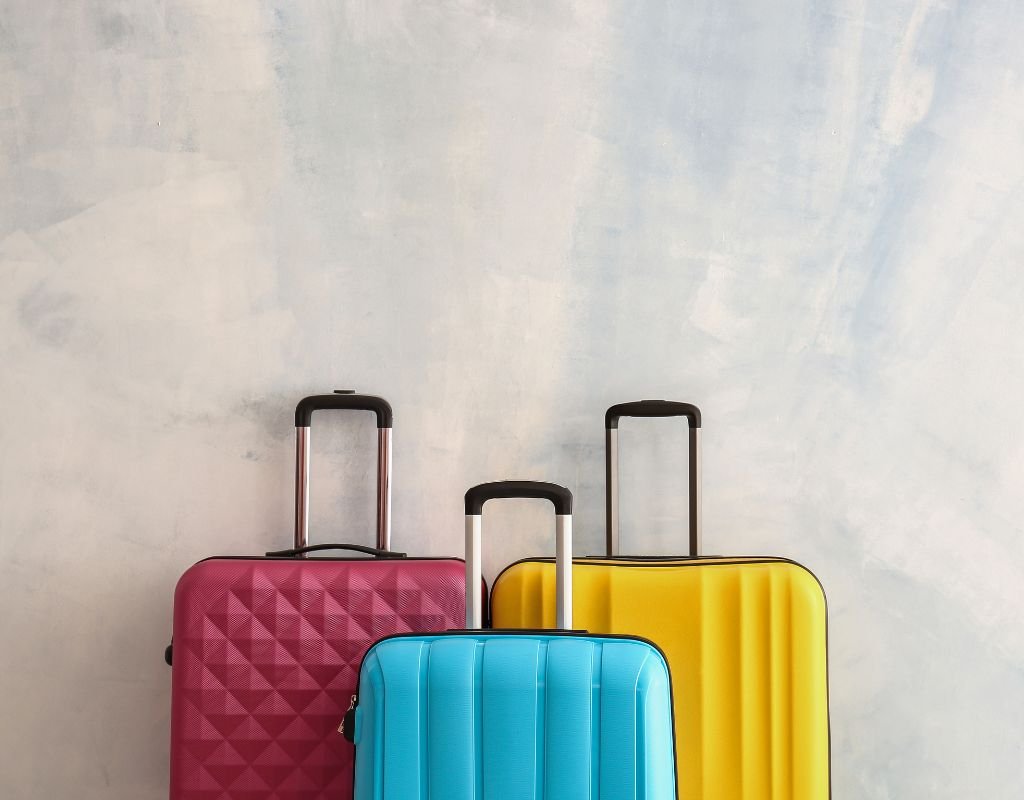Checklist to Travel to Europe – a Guide to a Well-packed Trip
|
When you travel having a reliable packing guide is a real lifesaver. Without a travel essentials list, I might forget crucial things like my passport or toothbrush! I now live in Europe, but every time my family and I took a flight to Europe, this check list was my go to.
A well-packed suitcase always gave me more time to enjoy my trip than worry about what I’d forgotten. Check out my checklist to travel to Europe, call it an essential item to take if you will.
Now, you’ve probably seen articles claiming you need 30 different items for your travels. Well, that’s just not true. If traveling is a hobby for you then you don’t have to blow your budget on things you will forget about after one trip. The items we listed will guarantee a great travel experience and become your go-to companions.
While this list is tailored for European travel, many of these items are versatile and can tag along on adventures worldwide. So let’s wait no longer and get down to business on listing down our essential checklist!

A Checklist to Travel to Europe
When it comes to packing for a trip, simplicity is key. You’ll find a basic list of Europe travel essentials:

Packing Smart for Your Carry-On
Packing a carry-on bag might sound straightforward, but there are things you definitely don’t want to overlook. Airlines can make mistakes and lose your checked bag. So to avoid landing without your bathing suit or a jacket, follow these easy tips for your next trip abroad:
- Pack a Spare Outfit: Always stash an extra set of clothes in your carry-on. This way, if your checked bag goes missing, you won’t be stuck in clothes you’ve worn for hours on an airplane. Plus, it can save you some cash since you won’t need to shop for new clothes while waiting for your bag to arrive.
- Keep Your Coat With You: If your European destination is chilly, keep a coat close – it could save you from catching a cold. Likewise, if you’re heading to the beach, have a change of clothes, a bathing suit, and sandals in your carry-on. Most hotels provide towels, so you won’t even notice your bag’s absence!
- Prepare for an Overnighter: Be ready for the unexpected overnight stay. Include a travel-sized toothbrush, toothpaste, a mirror, deodorant, your phone charger, and a bit of makeup if you’re traveling alone as a woman. Just remember to keep it lightweight and pack only what you truly need.

Tips for Efficiently Packing Your Luggage
If you want to make the most of your packing cubes, we’ve got some valuable tips for you:
- Roll Your Clothes: Carefully fold your clothes together and then roll them into neat cylinder-shaped rolls. This minimizes wrinkles, maximizes packing cube space, and keeps things organized.
- Plan Your Outfits: Overpacking can lead to excess baggage fees and frustration. Check the weather, plan your outfits in advance, and roll them together for easy access.
- Separate Shoes from Clothes: It is best to separate shoes from your clothes for hygienic purposes. Many luggages come with separate compartments for exactly this so use it to keep your shoes separate and your clothes clean.
- Pack a Laundry Bag or Designate a Cube for Dirty Clothes: For longer trips, bring a plastic bag for dirty laundry and store it in a designated cube. This prevents your clean clothes from being dirtied by the used ones.
- Follow TSA Liquids Rules: Remember that liquids in your carry-on must be 3.4 ounces or under. This includes beverages, lotions, gels, liquid foundation, and perfumes. Larger liquids go in checked bags. All your carry-on liquids must fit inside a clear ziplock bag to prevent leaking.
- Check Your Suitcase Size: Ensure your suitcase checks with airline size requirements. For example, United Airlines typically allows carry-on bags up to 9 inches x 14 inches x 22 inches, including handles and wheels. Specific dimensions can vary by airline.
- Keeping Wires Tangle-free: Keep wires for headphones, phones, cameras, and laptop chargers neatly folded with elastic bands in a zippered case.
- Choose Softer Bags: Soft duffel bags are a better choice. They fit into tight spaces, under seats, and can endure more handling without damage compared to hard suitcases.
- Don’t Lock Your Suitcase Before the Airport: If your suitcase has a built-in lock, leave it unlocked until you arrive at your destination. Security checks might require access, and they won’t search for you on the plane; they’ll break the lock.

Double-Checking Before Departure
Before you set off on your journey, there are certain items and documents you must ensure are in order. Here’s what to double-check before you leave:
Personal Identification
- Passport and Personal Documents: These are your lifelines when you travel. Don’t leave home without your passport and personal ID documents. Make sure you have any necessary visas as well.
- International Driving License: If you plan to drive motorcycles or cars during your trip, ensure you have an international driving license if required.
- Emergency Contacts: Keep a notepad with important details, including the embassy’s phone number. Yes, smartphones have a notes app but you never know when your phone might die on you. It’s your lifeline in case of any unexpected situations, and you’ll need someone to contact and support you.
Important Documents
- European Tourist Visa: If you’re visiting Europe, securing a European tourist visa is crucial. Plan ahead as many others will apply during peak tourist seasons. Consider the Schengen visa, which covers multiple European countries to save time and effort.
- Travel Insurance: Never underestimate the importance of travel insurance. It can cover medical expenses, lost luggage, hotel rooms, and trip cancellations. It’s an investment in peace of mind during your European adventure.
Medications
- Backup Medications: Bring necessary medications to ensure your health and well-being during your trip. It’s vital to have these on hand, particularly if you have specific health issues. Pack them in an easily accessible location for convenience.
- Medication List: Travel with essential medications like painkillers, digestive medicine, motion sickness pills, and any prescribed drugs for personal health issues. Also, include basic medical supplies like cotton bandages, hydrogen peroxide, and bandages in case of unexpected situations.

Set Up Your Home for Your Absence
Living alone can be difficult when you have to personally look after the whole house. Ensure that you do the following as a prerequisite before traveling:
- Lawn and Snow Care: Depending on the season, arrange for lawn mowing or snow removal if you’ll be away for an extended period. Nobody wants a jungle in the yard or a snow-covered driveway upon return.
- Heating in Winter: If it’s winter, keep your heating on low to prevent burst pipes and flooding. Turning it off entirely is a risky move.
- Pet Care: If you have pets, schedule a pet sitter well in advance. Booking them a few months ahead is wise. Ensure your furry friends are well taken care of in your absence.
- Garden Maintenance: If you have a garden, ask a neighbor for help with watering if necessary. Keeping your garden in good shape is essential.
- Unplug Electronics: Unplug appliances and electronics that don’t need to be running. This not only saves electricity but also reduces the risk of electrical fires while you’re away.
- Home Safety Check: Double-check that the stove, oven, garage door, doors, windows, and security systems are all secure. Ensure dishes are cleaned, and trash and recycling are taken out to avoid foul odors and other issues.
- Ask Your Neighbor To be Vigilant: If possible, inform your neighbors, family, or friends in the area about your absence. Having someone periodically check on your house can reduce the risk of break-ins.
- Consider a House Sitter: If you can work it into your budget, hiring a live-in house sitter can address most of these concerns. They’ll be your point of contact for any questions or emergencies.
Additional Tips To Enhance Your Trip
Travel is all about the experience. Here are some extra items to consider packing on top of your Europe travel essentials list:
- Packing Cubes: These are lifesavers for staying organized. They come in various sizes, and some even include shoe bags. Investing in good quality ones will totally be worth it.
- Reusable Water Bottle With A Filter: If you’ve ever traveled to countries where tap water isn’t safe to drink, you’ll appreciate this. Even in Europe, particularly farther east, having a reusable water bottle with a built-in filter is a game-changer. It’s not just eco-friendly and a sustainable way to travel but also ensures you can drink clean water on the go.
- Mini Travel Bottles: Stores tend to charge a premium for travel-sized toiletries. Instead, get a set of TSA-approved, labeled mini travel bottles. They save you money and the hassle of deciphering what’s in each bottle. Plus, they come in fun colors and have a clear, travel-approved case for easy security checks.
- Universal Travel Adapter: This is a must. Having the wrong adapter can be not only inconvenient but also potentially dangerous. Try to get one that is well-made with movable parts that don’t get stuck. It’s essential because different countries have varying voltages, and outlets vary too. Look for one with multiple charging ports.
- Power Bank: A power bank is a savior when you’re on the move and your phone is running low. If you use your phone for everything, from navigation to photography, a slim, lightweight power bank is your backup. It’s also great for long rides on various modes of transportation.

Checklist to Travel to Europe: FAQ
How much cash should I bring to Europe?
On average, it’s a good idea to carry between $50 and $100 per day in the local currency of the country you’re visiting. However, thorough research is essential. Familiarize yourself with your destination’s cash customs for a more informed decision.
Can I use my ATM card in Europe?
Yes, debit cards with Mastercard or Visa logos are widely accepted in Europe. American Express is less common, except at tourist hotspots. Be aware that many banks charge foreign transaction fees and currency conversion fees. Always check these costs before your departure.
How do I avoid foreign transaction fees in Europe?
To bypass foreign transaction fees, consider qualifying for a credit card that negates these fees. Alternatively, look for checking accounts or debit cards that don’t charge foreign transaction fees. Another tactic is to opt for paying in the local currency for your purchases, which can help you avoid these extra fees.
Checklist to Travel to Europe: Conclusion
A well-prepared traveler is a happy traveler. We hope that our travel checklist proves to be the essential guide that will make your journey as smooth and worry-free as possible. This checklist should equip you for an unforgettable adventure through the heart of Europe. So, pack your bags, check off this list, and get ready to explore the wonders of Europe with confidence and excitement! Safe travels!
Hello and Welcome!

We started our family travel blog in hopes of supporting other families move abroad and travel the world. Through straightforward, sincere and supportive information we hope to provide a reliable guide for those moving overseas with a family and traveling the globe.





